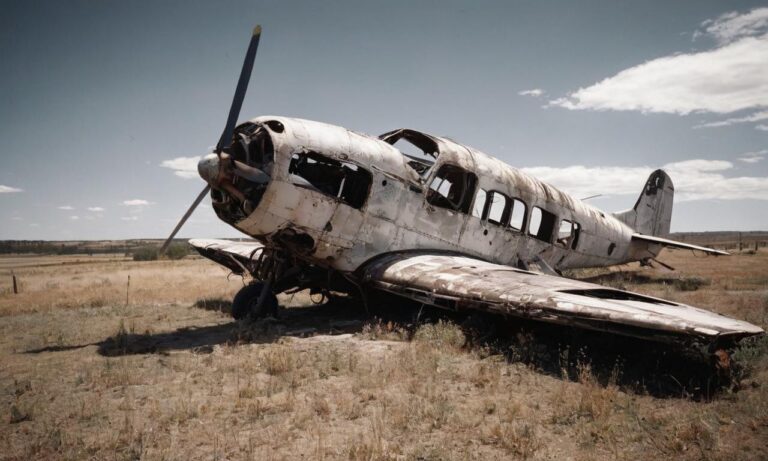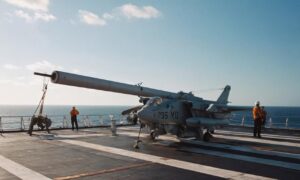When delving into the historical events surrounding the dropping of the atomic bomb, one cannot help but be transported back to the final stages of World War II. The culmination of years of research, development, and political decisions resulted in a moment that would alter the course of history forever.
The Enola Gay Takes Flight
At the epicenter of this historic event was the Boeing B-29 Superfortress named the Enola Gay. On August 6, 1945, this iconic aircraft carried the world’s first deployed atomic bomb, code-named “Little Boy,” over the Japanese city of Hiroshima. Piloted by Colonel Paul Tibbets, the Enola Gay played a pivotal role in the United States’ strategy to bring an end to the Pacific Theater of World War II.
The Birth of the Manhattan Project
Understanding the context requires a glimpse into the origins of the atomic bomb project. The Manhattan Project, initiated in 1939, brought together some of the world’s brightest scientific minds with the singular goal of developing nuclear weapons. The fruits of their labor were two distinct bombs, with Little Boy and Fat Man being the first and second atomic bombs, respectively.
The Decision to Drop the Bomb
The decision to drop the atomic bomb was not taken lightly. President Harry S. Truman, who had inherited the immense responsibility from his predecessor, President Franklin D. Roosevelt, grappled with the weight of the decision. The Pacific War was reaching a critical juncture, and Truman faced the choice of continuing a costly invasion of Japan or utilizing the unprecedented power of the atomic bomb.
Hiroshima: The Target
Hiroshima, a city with military significance but also a high concentration of civilians, was chosen as the primary target for the first atomic bomb. The goal was to force Japan into surrendering by demonstrating the devastating power of this new weapon.
The Impact and Controversy
The aftermath of the bombing of Hiroshima was catastrophic. The city lay in ruins, and tens of thousands of lives were lost in an instant. The decision to use such destructive force continues to be a subject of intense historical debate, with arguments focusing on the morality, ethics, and long-term consequences of this action.
Legacy of the Enola Gay
The Enola Gay, now housed in the National Air and Space Museum in Washington, D.C., stands as a somber reminder of the unprecedented power humanity harnessed during that fateful mission. The aircraft’s legacy is intricately tied to the complex narrative of the atomic age and its enduring impact on global politics, warfare, and the ethical considerations surrounding the use of such destructive weaponry.
The Enola Gay’s mission marked a pivotal moment in human history, forever changing the landscape of warfare and geopolitics. Understanding the events leading up to that mission, the decision-making process, and the aftermath is crucial for grasping the complexities of this historical juncture. As we reflect on the question of what plane dropped the atomic bomb, we unravel a tale of innovation, moral dilemmas, and the stark realities of war.
Scientific Prowess and the Manhattan Project
Delving into the intricacies of the Manhattan Project reveals the remarkable scientific prowess that fueled the development of the atomic bomb. Led by physicists like J. Robert Oppenheimer, the project brought together brilliant minds to unravel the secrets of nuclear fission and push the boundaries of scientific understanding.
The Arsenal: Little Boy and Fat Man
Within the confines of the Manhattan Project, scientists meticulously crafted the two iconic bombs, each with its own design and destructive potential. Little Boy, the bomb dropped on Hiroshima, and Fat Man, its successor, showcased the technological achievements that emerged from the collaborative efforts of the scientific community.
Political Ramifications and Global Fallout
The aftermath of the atomic bombings extended beyond the physical destruction of Hiroshima and Nagasaki. The geopolitical landscape shifted dramatically as the world grappled with the implications of nuclear warfare. The Cold War era dawned, characterized by a tense arms race and the fear of mutually assured destruction.
Frequently Asked Questions
Curiosity surrounding the events of the atomic bombings and the Enola Gay often gives rise to several questions. To address common inquiries, here are some frequently asked questions:
| Question | Answer |
|---|---|
| 1. Who was the pilot of the Enola Gay? | Colonel Paul Tibbets served as the pilot of the Enola Gay during its historic mission. |
| 2. What was the main goal of the Manhattan Project? | The Manhattan Project aimed to develop nuclear weapons, ultimately resulting in the creation of the atomic bombs, Little Boy and Fat Man. |
| 3. Why was Hiroshima chosen as the target? | Hiroshima was selected due to its military significance and the strategic objective of compelling Japan to surrender through the demonstration of the bomb’s power. |
| 4. What is the legacy of the Enola Gay? | The Enola Gay’s legacy encompasses its role in changing the course of history, shaping global politics, and sparking ongoing debates about the ethics of using atomic weapons. |
Reflections on Ethical Dilemmas
The ethical considerations surrounding the use of atomic weapons persist as a profound aspect of the historical narrative. Examining the decisions made by leaders during that critical period prompts reflection on the moral complexities inherent in the pursuit of military objectives.






